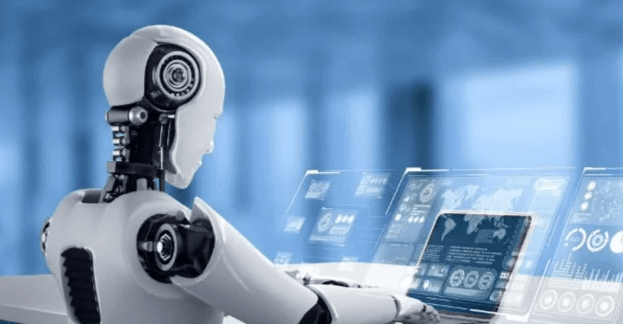What are the implications of deepfake technology on information authenticity and media trust?

Introduction
Deepfake technology, leveraging advanced artificial intelligence (AI) and machine learning techniques, has dramatically transformed how digital content is created and consumed. While deepfakes hold promise for innovation in entertainment and education, they also pose severe threats to the integrity of information and the trustworthiness of media. This article explores the extensive implications of deepfake technology on information authenticity and media trust.
The Rise of Deepfake Technology
Deepfake technology emerged from breakthroughs in AI, particularly generative adversarial networks (GANs). These systems generate realistic but fake digital content by training on vast datasets. The increasing accessibility and sophistication of deepfake tools have raised significant concerns.
How Deepfakes Work
Deepfakes involve a complex process of data collection and machine learning. Key steps include:
- Data Collection: Gathering extensive images, audio, and videos of the target.
- Model Training: Using GANs to train a model to generate fake content.
- Refinement: Iteratively improving the generated content to enhance realism.
The Impact on Information Authenticity
Deepfakes blur the line between reality and fabrication, making it challenging to discern genuine information from manipulated content. This ambiguity undermines the credibility of information sources, leading to widespread misinformation.
Media Trust and Public Perception
The prevalence of deepfakes erodes public trust in media. As deepfakes become more convincing, audiences struggle to differentiate between authentic and fake news, fostering skepticism and diminishing confidence in traditional media outlets.
Legal and Ethical Concerns
The use of deepfakes raises significant legal and ethical issues. These include potential violations of privacy, consent, and defamation. Addressing these concerns requires comprehensive legal frameworks and ethical guidelines to prevent misuse.
The Role of Social Media
Social media platforms are crucial in the dissemination of deepfakes. These platforms face challenges in regulating and removing deepfake content promptly, exacerbating the spread of misinformation and fake news.
Potential Benefits of Deepfakes
Despite their risks, deepfakes offer several positive applications:
- Entertainment: Enhancing movies, video games, and virtual reality experiences.
- Education: Creating interactive and engaging educational materials.
- Healthcare: Assisting in medical training and patient simulations.
Deepfakes in Politics
Deepfakes pose a significant threat to political stability. They can be used to create fake videos of politicians, potentially influencing public opinion and election outcomes, thereby undermining democratic processes.
Economic Implications
The rise of deepfakes affects various economic sectors, particularly media, cybersecurity, and digital forensics. Businesses must invest in technologies to detect and counter deepfakes, increasing operational costs and impacting profitability.
Psychological Effects on the Public
Exposure to deepfakes can cause psychological distress, as individuals may feel violated when their likeness is used without consent. Additionally, the pervasive uncertainty about the authenticity of information can lead to anxiety and mistrust.
Countering Deepfake Technology
Efforts to combat deepfakes include developing advanced detection tools, enhancing public awareness, and implementing stringent regulations. Collaborative efforts between tech companies, governments, and academia are essential in these initiatives.
The Future of Deepfake Technology
As deepfake technology advances, it will become increasingly sophisticated and harder to detect. Continuous innovation in detection methods and legal measures will be crucial to mitigating its adverse effects.
Ethical AI Development
Promoting ethical AI development is critical to addressing the challenges posed by deepfakes. Ensuring transparency, accountability, and fairness in AI systems can help prevent misuse and build public trust in technology.
Case Studies of Deepfake Use
Analyzing case studies provides insight into the real-world impact of deepfakes. Notable examples include:
- Political Manipulation: Fake videos of politicians altering public perception.
- Celebrity Deepfakes: Unauthorized use of celebrity images in fake videos.
- Corporate Espionage: Deepfakes used to manipulate financial markets.
Public Awareness and Education
Raising public awareness about deepfakes and educating people on identifying fake content are critical steps in combating misinformation. Media literacy programs can empower individuals to critically evaluate information sources.
The Role of Journalists
Journalists are vital in maintaining information authenticity. They must adopt new verification techniques and work with tech experts to identify and expose deepfake content, thus upholding media integrity.
Technological Innovations in Detection
Advancements in AI and machine learning are driving the development of sophisticated deepfake detection tools. These technologies can analyze digital content for inconsistencies and verify its authenticity, helping to combat misinformation.
Collaboration Between Stakeholders
Addressing the negative impact of deepfakes requires collaboration between various stakeholders, including governments, tech companies, and civil society. Joint efforts can lead to more effective solutions and policies.
Regulatory Frameworks
Governments worldwide are beginning to recognize the need for regulatory frameworks to address deepfakes. These regulations must balance protecting individual rights with preventing the malicious use of technology.
Challenges in Deepfake Detection
Detecting deepfakes presents several challenges, including the constant evolution of the technology and the widespread availability of open-source deepfake tools. Researchers must stay ahead of these developments to create effective detection methods.
The Role of AI in Counteracting Deepfakes
AI itself can be a powerful tool in counteracting deepfakes. Developing AI systems capable of detecting and flagging deepfake content in real-time can significantly reduce its spread and impact.
The Importance of Digital Literacy
Digital literacy is crucial in the fight against deepfakes. Educating the public on navigating the digital landscape and recognizing fake content can reduce the impact of misinformation and enhance media trust.
The Ethics of Deepfake Creation
Creating deepfakes raises ethical questions about consent and privacy. Ensuring that individuals’ rights are respected and obtaining proper consent before creating deepfake content are essential ethical considerations.
The Legal Landscape
The legal landscape surrounding deepfakes is still evolving. Laws must adapt to address the unique challenges posed by this technology, including issues of jurisdiction and enforcement.
Psychological Warfare and Deepfakes
Deepfakes can be used in psychological warfare to spread propaganda and create social discord. Understanding and countering these tactics is vital for national security and societal stability.
The Role of Tech Companies
Tech companies have a responsibility to develop and implement tools to detect and mitigate the spread of deepfakes. Their proactive involvement is crucial in safeguarding information authenticity and media trust.
Future Predictions
Predicting the future of deepfake technology involves considering its potential for both beneficial and harmful applications. Ongoing research and development will shape its trajectory and influence how society adapts to this technology.
FAQs
How do deepfakes affect media trust?
Deepfakes erode media trust by making it difficult to verify the authenticity of content, leading to increased skepticism and distrust in media sources.
Can deepfakes be detected?
Yes, deepfakes can be detected using advanced AI and machine learning tools designed to identify inconsistencies and trace the origins of digital content.
What legal measures are being taken against deepfakes?
Various governments are developing regulatory frameworks to address deepfakes, including laws that criminalize the malicious use of this technology and protect individuals’ rights.
What are some positive uses of deepfakes?
Positive uses of deepfakes include enhancing entertainment through realistic visual effects, creating interactive educational content, and assisting in medical training simulations.
How can individuals protect themselves from deepfakes?
Individuals can protect themselves by staying informed about deepfakes, verifying the authenticity of content before sharing, and using digital literacy skills to navigate the online information landscape.
What is the role of journalists in combating deepfakes?
Journalists play a crucial role in maintaining information authenticity by adopting new verification techniques, collaborating with tech experts, and exposing deepfake content.
Conclusion
Deepfake technology presents both opportunities and challenges. While it offers exciting possibilities in various fields, it also threatens information authenticity and media trust. Addressing the implications of deepfakes requires a multifaceted approach involving technological innovation, legal frameworks, public awareness, and ethical considerations. By working together, society can harness the benefits of deepfakes while mitigating their potential harm.




